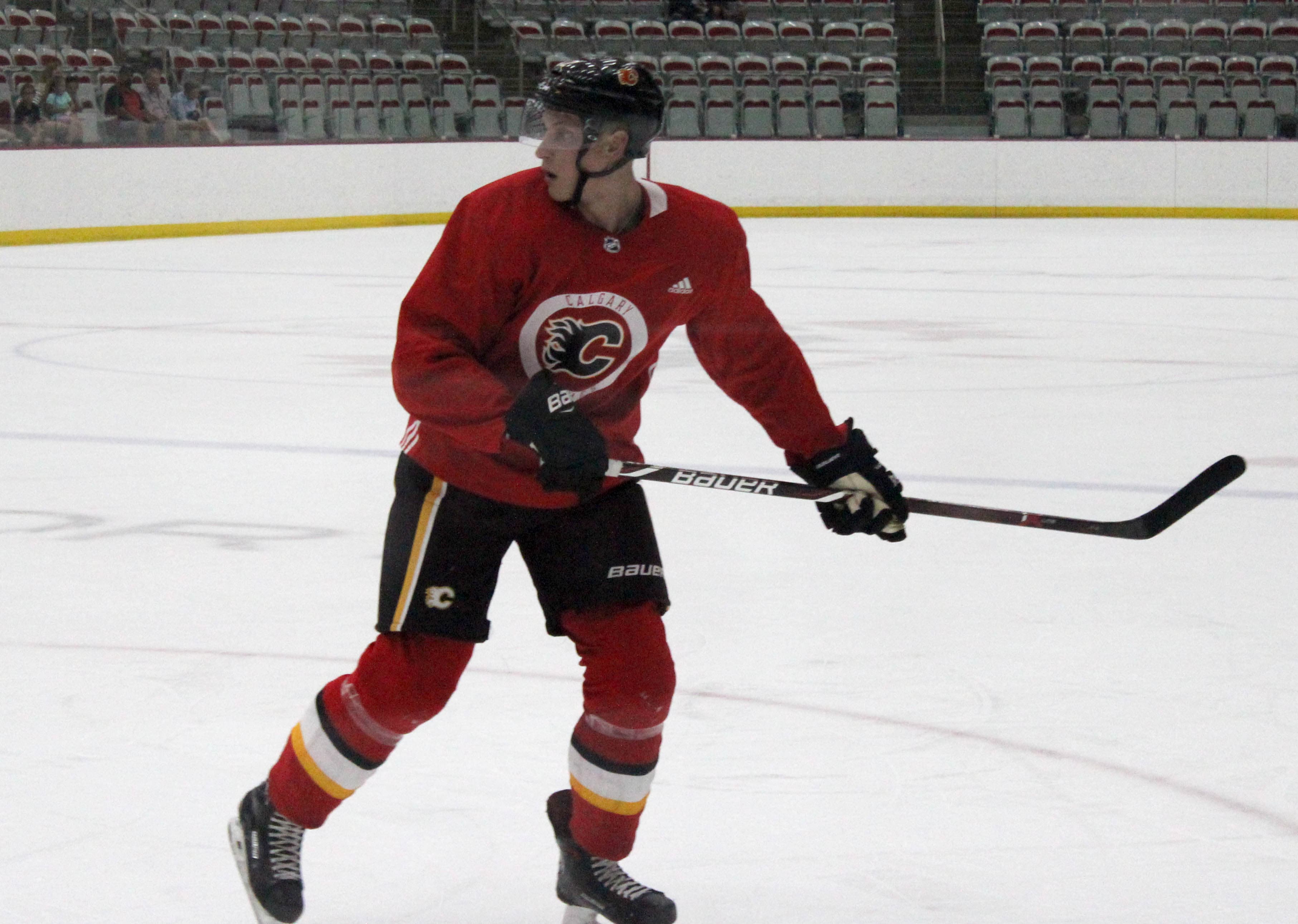The upcoming expansion process will impact Flames decision-making

By Ryan Pike
5 years agoThe opening of training camp for the 2018-19 season is almost upon us and, aside from a new deal for Noah Hanifin and perhaps some minor moves here and there, it appears that the Calgary Flames are set for the upcoming year.
But just over the horizon looms something that’s definitely impacting the Flames’ decision-making over the next season or two: the addition of the Seattle Grinders (or whatever they’ll end up being called) as the National Hockey League’s 32nd team. It may be a couple seasons away – the current plans for Key Arena’s renovation pegs Seattle’s addition in time for the 2020-21 campaign – but it’s worth thinking about how the upcoming expansion process could impact the Flames.
The presumptive rules
All indications from commissioner Gary Bettman and deputy Bill Daly are that the Seattle group will be given the same expansion rules as the Vegas Golden Knights received in 2017 – despite the handwringing from other teams, Seattle’s paying $650 million for a team so they’ll get the same advantages.
- Teams can protect either (a) seven forwards, three defensemen and a goalie or (b) eight skaters and one goalie.
- Players with “no move” clause must be protected unless they agree to waive those clauses. (Spoiler: Very few did last time.)
- All first- and second-year professionals, as well as all unsigned draft choices, will be exempt from selection (and will not be counted toward their club’s applicable protection limits) – as in, if the 2019-20 season was their first or second pro season, they’re exempt. An important distinction is that “slide” years spent in the pros count as pro seasons – Emile Poirier was available in the 2017 expansion draft despite having used only two entry-level years because he had played three pro seasons (the first season was a “slide” year).
All NHL clubs (including Vegas, presumably) must expose:
- One defensemen who is under contract for 2020-21 and played 40+ NHL games in 2019-20 (or played 70+ games in 2018-20).
- Two forwards who are under contract for 2020-21 and played 40+ NHL games in 2019-20 (or played 70+ games in 2018-20).
- One goalie who is under contract for 2020-21 or will be a restricted free agent following the 2020-21 season (he must be qualified prior to the submission of the protected lists).
A quick recap of 2017’s draft
Back in 2017, the Flames opted to protect seven fowards (Mikael Backlund, Sam Bennett, Micheal Ferland, Michael Frolik, Johnny Gaudreau, Curtis Lazar and Sean Monahan), three defensemen (TJ Brodie, Mark Giordano and Dougie Hamilton) and goalie Mike Smith.
To meet their experience requirements, they exposed defenseman Matt Bartkowski, forwards Troy Brouwer and Matt Stajan, and goaltender Tom McCollum. They also exposed forwards Brandon Bollig, Lance Bouma, Alex Chiasson, Freddie Hamilton, Emile Poirier, Hunter Shinkaruk, Kris Versteeg and Linden Vey, defensemen Ryan Culkin, Deryk Engelland, Michael Kostka, Brett Kulak, Ladislav Smid, Michael Stone, Dennis Wideman and Tyler Wotherspoon, and goalie Brian Elliott.
Vegas ended up selecting pending unrestricted free agent Engelland.
A look ahead to a 2020 draft
Let’s assume two things: (1) Seattle joins the NHL via a 2020 expansion draft with identical rules to Vegas’ entry, and (2) the Flames sign Hanifin and Matthew Tkachuk to long-term deals that include the 2020-21 season.
If the Flames opt to protect seven forwards, three defensemen and a goalie, they have some flexibility (and some decisions to make):
- At forward, the obvious locks for protection spots are Gaudreau, Monahan, Backlund, Tkachuk and Elias Lindholm. With both players deep into their 30s (and the third year of their contracts), one or both of James Neal and Derek Ryan could be candidates for exposure (and would help the Flames meet the exposure requirements). That would allow the Flames to potentially protect one or two of Mark Jankowski, Austin Czarnik, Sam Bennett, or any number of minor leaguers that could push their way onto the NHL roster in the interim.
- On the blueline, the Flames have lots of flexibility with Hanifin and Giordano under contract and Brodie, Stone and Travis Hamonic as pending UFAs. They could potentially expose Giordano heading into the final year of his contract and hope that his cap hit (and age) could scare the Grinders away, while protecting some of their younger assets – such as Rasmus Andersson or Oliver Kylington. There’s a possibility they might need to sign a depth player (ala Bartkowski in 2016-17) to meet their exposure requirements.
- In goal, the Flames have no goaltenders under contract for 2020-21. They could potentially qualify pending RFAs Jon Gillies and Tyler Parsons, then protect whichever one they prefer to keep. The other RFA would meet their exposure requirements.
Not eligible for expansion selection, due to having completed two pro seasons by the expansion draft, are Juuso Valimaki, Dillon Dube, Glenn Gawdin, Nick Schneider and Matthew Phillips.
But what if Seattle starts in 2021 instead?
If there’s a lockout in 2020-21 or the Key Arena renovations aren’t completed until the following season – creating a 2021 expansion draft – the Flames have some additional challenges, primarily that they’d need to potentially protect Valimaki and Dube. That said, they would retain much of their existing roster flexibility in all three categories. They have just six players under contracts for 2021-22: Gaudreau, Monahan, Neal, Backlund, Lindholm and Giordano.
Needless to say, there are a lot of decisions that need to be made going forward and a lot of things that the expansion process touches upon. The NHL’s Board of Governors meet in September and December, and given the necessity for timeline clarity, expect definitive expansion news within the next few months.
Recent articles from Ryan Pike





